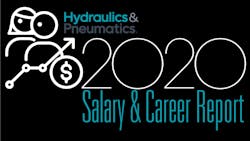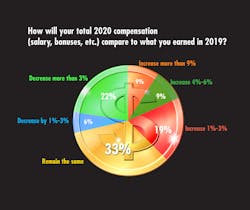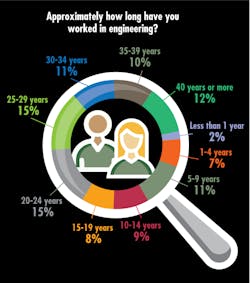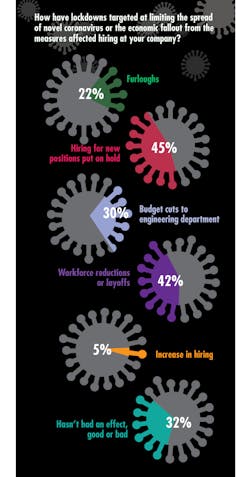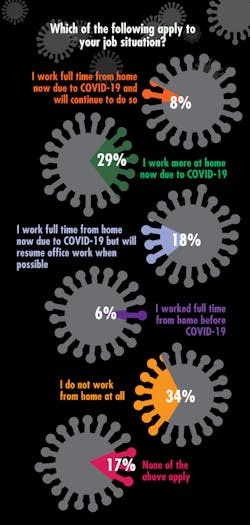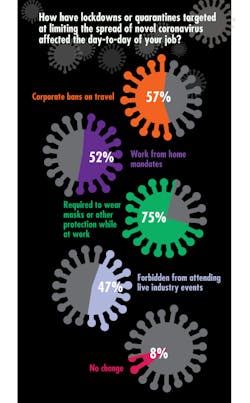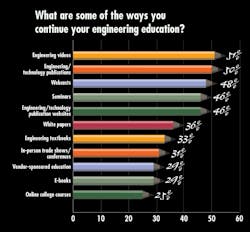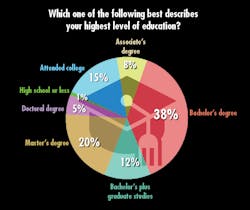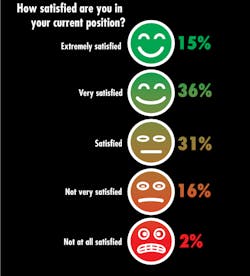Even in a year of upheaval and uncertainty, engineers who participated in the 2020 Hydraulic & Pneumatics annual Salary & Career Survey offered enthusiasm for both their profession and for their outlook on the future.
With the COVID-19 pandemic ravaging the world at the end of the year, respondents to this year’s survey said their companies largely are staying the course in anticipation of a recovery in 2021. While this hasn’t delivered large pay increases, it also hasn’t mean severe cuts.
Look beyond the compensation and you find a group of professionals intensely proud of their work and fundamentally committed to its future.
“It is a very rewarding profession and provides a sense of accomplishment when an idea become a reality and [it] has a profound effect on some one’s life or advances technology in some manner,” said one respondent.
“Engineering if done consciously it makes more wholistic person that you were,” said another engineer. “It teaches you wholistic thinking, never-die attitude, problem solving and many more things.”
“It is an amazing profession full of discoveries and developments that change and make you study, research, innovate all the time,” another respondent added.
Overall, 82% of respondents said their current job was satisfying, with 15% stating they were “extremely satisfied.” As another respondent put it, “Engineering is a profession where your knowledge and wisdom are respected. The satisfaction of seeing a person use your engineering output to better their lives is the greatest feeling.”
A Challenging Year
The challenges of 2020 were unlike any faced in a generation. The impact of COVID-19 changed the way many engineering professionals approached their job and forced other to alter the way they worked.
The pandemic forced 29% of respondents to do more work from home in 2020, and another 8% said they would continue to work from home after the pandemic. Still, more than one-third of respondents said they do not work from home now.
There were layoffs from the pandemic, as 42% of respondents said their company had reduced their workforce and 22% had used furloughs. New hiring also was put on hold by 45% of respondents and 30% saw a cut to engineering department budgets. But almost one-third of respondents said there was no impact on their operations.
The pandemic also changed the way engineers interact with each other and their industry. Three-quarters of all respondents are required to wear masks or other protection at work, while 57% of respondents saw a ban on company travel. This extended to trade events, as 47% were barred from those gatherings. Most trade events have been cancelled or turned into virtual events in the second half of 2020, and those cancellations already have been extended well into 2021.
That has forced engineers to continue their education using other information channels. Some haven’t changed much: More than half use videos or print magazines such as Hydraulics & Pneumatics. Webcasts are viewed regularly by 48% of respondents, with publication websites used by 46% and white papers by another 36%.
The biggest challenge pneumatic and hydraulics engineers face is the one they’ve confronted for decades: time. More than any other issue, the lack of time to continue learning about new technologies or simply being able to do their work within the confines of a daily schedule is a continuing barrier. There were 43% of respondents who work more than 40 hours in a week on the job, and 31% said they worked up to 10 hours a week at home on top of their work schedule.
Education and Satisfaction
The engineers who participated in this year’s Salary & Career Survey are an experienced and educated group: 75% have at least a Bachelor’s degree and 25% have earned a Master’s or doctoral degree. Their job experience is extensive: 63% have been in engineering more than 20 years and one-third have been in the industry at least 30 years.
While that may suggest there are more engineers ready to leave the profession than are entering, only 51% of respondents believe there is an engineering shortage today. They also see a strong future for engineering, with two-thirds stating it had the same potential for career growth and advancement as there was five years ago, and 89% would recommend engineering as a career to a young person.
Their enthusiasm on this point is great and profound. One respondent wrote, “Engineering will always be in demand. I suggest the study of robotics/automation as the world is moving to replace as much labor with robots/automation as financially practical.”
“Not everyone's cut out to be an engineer,” another respondent wrote. “It is those few that have the aptitude and interest that will succeed in the profession.”
One other survey respondent sees his work as something that benefits the larger world as much as his own career. “You have to engage your brain,” he wrote, “and the sense of satisfaction when you bring a project to its conclusion or find a solution for a problem and sometimes what you do can make a difference.”
About the Author
Bob Vavra
Senior Content Director, Power & Motion and Machine Design
Bob Vavra is the Senior Content Director of Power & Motion and its sister publication Machine Design. Vavra has had a long career in publishing, media and events. He has covered all aspects of manufacturing for the past 20 years and is a regular attendee at events such as IMTS and Hannover Messe. Vavra is also a sought-after webcast moderator and event emcee, and has presided over events in the U.S., Germany and China.

Leaders relevant to this article:
